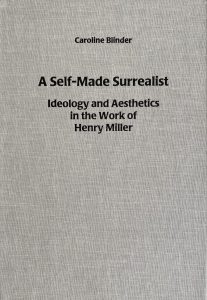
The American Photo-Text,
1930-1960
This critical study of the American photo-text focuses on the interaction between text and images in twentieth-century American photography as well as the discourse surrounding image-text collaboration on a wider level. In looking at books designed as collaborative efforts between writers and photographers and by photographer/writers adding their own narrative text, it establishes the photo-text as a genre related to and yet distinct from other documentary efforts. Ranging from documentary studies in the 1930s to post-war examinations of the American landscape, urban and rural, from Dorothea Lange’s photographs of dispossessed migrants in American Exodus (1939), Weegee’s small time hoodlums on the streets of New York in Naked City (1945), to Robert Frank’s Cold War landscapes, this survey constitutes an invaluable entry into how we read the politics of twentieth-century American photography.

A Self-Made Surrealist
Ideology and Aesthetics in the Work of Henry Miller
In this re-evaluation of Miller's role as a radical writer, Blinder considers not only notions of obscenity and sexuality, but also the emergence of psychoanalysis, surrealism, automatic writing, and the aesthetics of fascism, as they illuminate Miller's more general 20th-century concerns with politics and mass psychology in relation to art. Blinder also considers the effect on Miller of the theoretical works of Georges Bataille and André Breton, among others, in order to define and explore the social, philosophical, and political contexts of the period. By examining the enormous impetus Miller got from being in the midst of French culture and its debate, A Self-Made Surrealist shows that Miller was indeed a seminal writer of the period rather than simply an isolated male chauvinist.